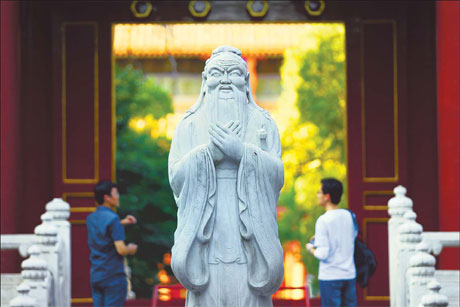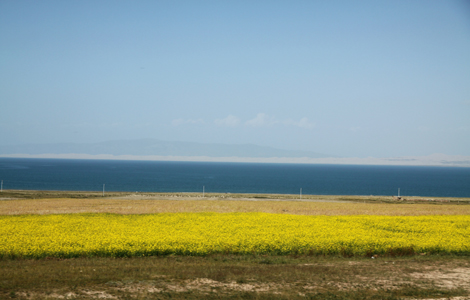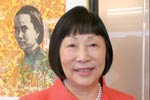Confucius alive
Updated: 2011-09-25 07:55
By Mike Peters and Zhang Chunyan (China Daily)
|
|||||||||
|
|
China's ancient sage is helping the country propagate its language and culture abroad. An institute named after Confucius is sowing the seeds of better understanding and better communication with the world, throughout the world. Mike Peters and Zhang Chunyan take a closer look at the Confucius Institute abroad.
Close your eyes and try to imagine Confucius as a young man. That may be a tough picture to conjure up since the most famous images of the iconic philosopher feature a wispy white beard and an age-lined face that reflects a long life of accumulated wisdom. A young Confucius? It's easier to imagine Santa Claus or Genghis Khan in short pants. But there's not a gray hair to be found on the face of Confucius today. His modern visage is young, usually twenty-something, and numbers in the thousands. They are the bright-eyed legion of Hanban, the nonprofit public agency that administers the Confucius Institute worldwide, adventurers as eager to see the world as China is to send them. The institute itself is young. Impressed with the experience of countries like Britain, France and Germany in promoting their national languages, China launched the Confucius Institute in 2004 to promote its mother tongue and culture around the world.
| ||||
The Ministry of Education estimated that 100 million people outside China will be learning Chinese by 2010. As of July 2011, 350 Confucius Institutes (university affiliated) and 430 Confucius Classrooms (at secondary schools) have been established in 103 countries and regions.
"The model has earned wide recognition," says Wang. "Now more than 260 universities or institutes worldwide are waiting for their applications for new Confucius Institutes to be approved."
Hanban approaches its mission to spread Chinese around the world in many ways, from direct language study to cultural programs and exchanges. This summer, US basketball star Kobe Bryant met 11 American students in Shanghai who study Mandarin and martial arts after school through the Los Angeles After-School All-Stars program supported by Bryant's charity foundation. They were in Shanghai as part of a two-week study tour organized by the Chinese Ministry of Education and the UCLA Confucius Institute.
Hanban recruits more than 7,000 TCSL (Teaching Chinese as a Second Language) teachers and volunteers from Chinese universities each year. Candidates are recommended by their universities or schools first, and then selected by strict exams, Wang says. "After training, qualified TCSL teachers will go abroad and teach there for two years. The recruitment and training process is a big task."
| ||||
Chen Ling, from Sichuan province, likes the interaction with children - "they are so lovely!" - but has discovered it is very difficult to teach well.
"We need to learn about the students' interests, characters and cognitive developmental levels, and make the class organized, effective and interesting," she says. "So the teaching experience here strengthens my desire to be a teacher, and also makes me more realistic about the work."
Because she teaches middle grades at a school founded by the Chinese community, some of her charges understand Mandarin pretty well. But for many foreign students, the Chinese language is like a Christmas present for the mind -brand-new with lots of unknowns under the wrapping.
Xu Jia, one of about 1,000 Chinese teachers sent to the US between 2005 and 2010, told China Daily earlier this year that Americans were not very familiar with modern China.
Despite high-profile events like the 2008 Beijing Olympics, she says their impressions about the country are often confined to novels about China before the reform and opening up.
"They knew about ancient China from history lessons, but they are eager to know about modern China," says Xu, who comes from East China's Shandong province. "The more they know about the country, they more friendly they will feel towards the Chinese people."
Chinese is very different from English and the Romance languages, and talented teachers are critical to get both the words and the cultural nuances across. As the program grows - Hanban has previously said it hopes to establish 1,000 Confucius Institutes by 2020 - a sustainable talent pool has become the biggest challenge for the development of Confucius Institutes, Wang says.
"Good teachers can make our Chinese courses more attractive, make people in different countries and regions accept it more easily."
At a recent national conference for Confucius Institutes in the UK, he said "teachers should use new techniques and methodologies to make Chinese teaching more applicable in foreign countries and regions".
While older teachers might struggle with that, the youthful corps chosen to fly China's flag abroad gets it. Liu Chengcheng, a graduate student from Dalian, is learning as she goes while teaching in Davos, the third largest city in the Philippines.
"When teaching foreign students, the teachers have to be very creative and thoughtful in lesson planning. Unlike Chinese students, foreign students cannot stay focused on the teachers for more than 10 minutes, so I have to arrange many role-plays and activities for them."
Chen Huangchao, who taught a class of very dutiful kindergarteners during his internship in Shanghai, faced a similar challenge with discipline and attention.
"Some of the kids cried all the time at first," says Chen, who tells his own story (at left). "School was new to them, Chinese was new to them, and they already had two languages, English and Tagalog."
At the university level, some foreign critics have fretted at the presence of the Confucius Institute on campuses, fearing interference with academic freedom. The Institute, however, focuses its programming on culture and communication and avoids ideological content.
In every country the Confucius Institutes reach, teaching material should adjust to local conditions, Wang says. Hanban and Confucius Institutes have published reference books and supplementary materials in 45 languages, but "we can't be sure that all are completely suitable for local use. We are exploring. Everything has a process".
In the meantime, about 7,000 young Chinese are seeing the world, many for the first time. They are eager but a little homesick, discovering new foods and new ideas, and making new friends for themselves and for China. Most of all, they are sharing their language and their culture and building the foundations for better understanding.
Please contact the writers at michaelpeters@chinadaily.com.cn and zhangchunyan@chinadaily.com.cn.
















